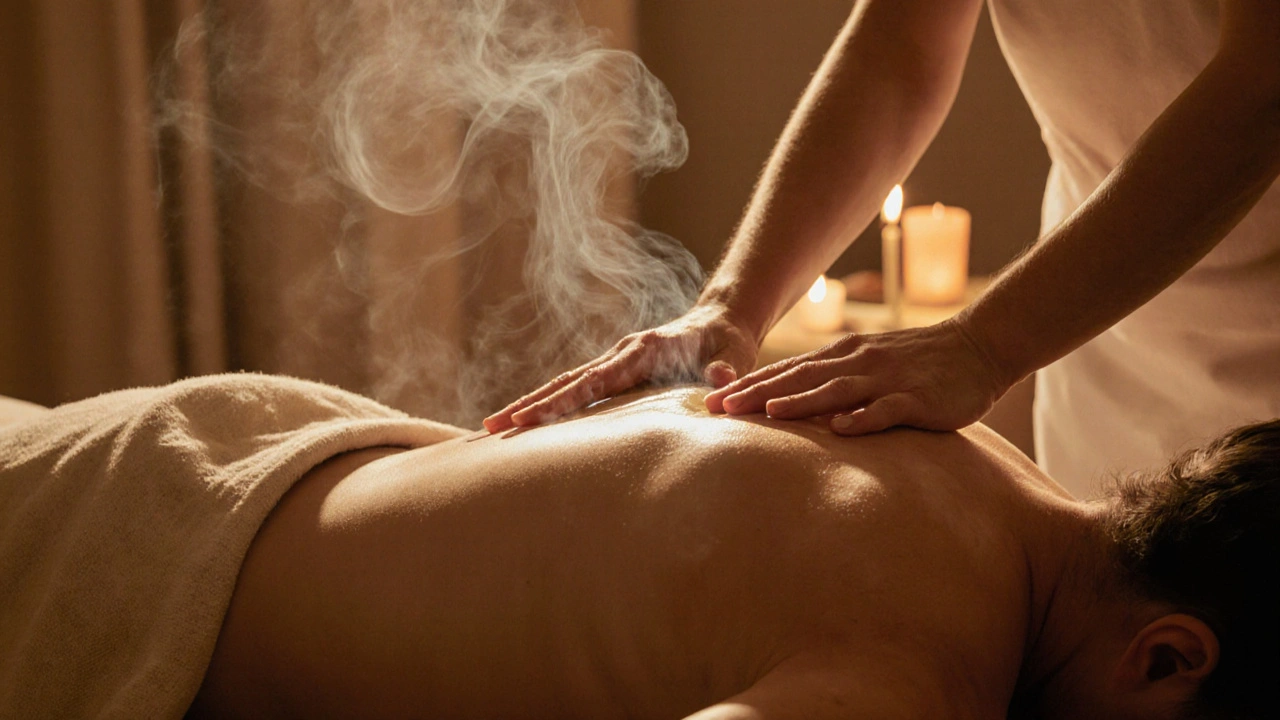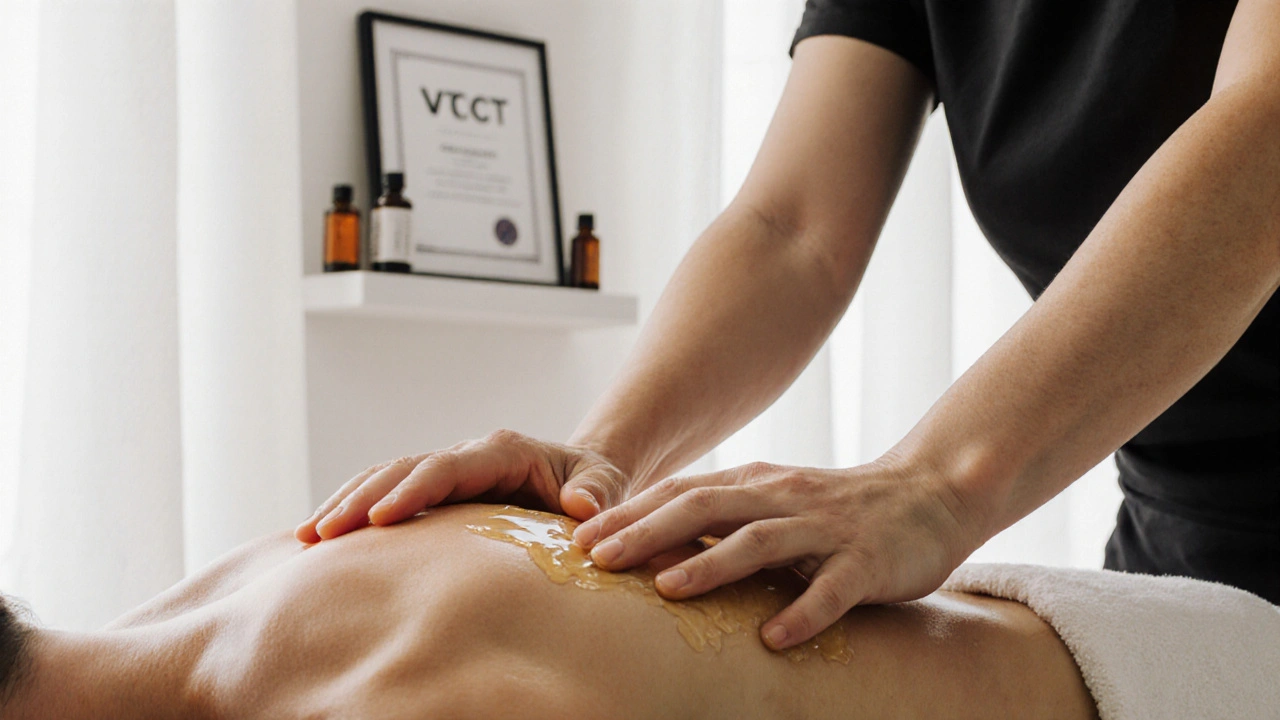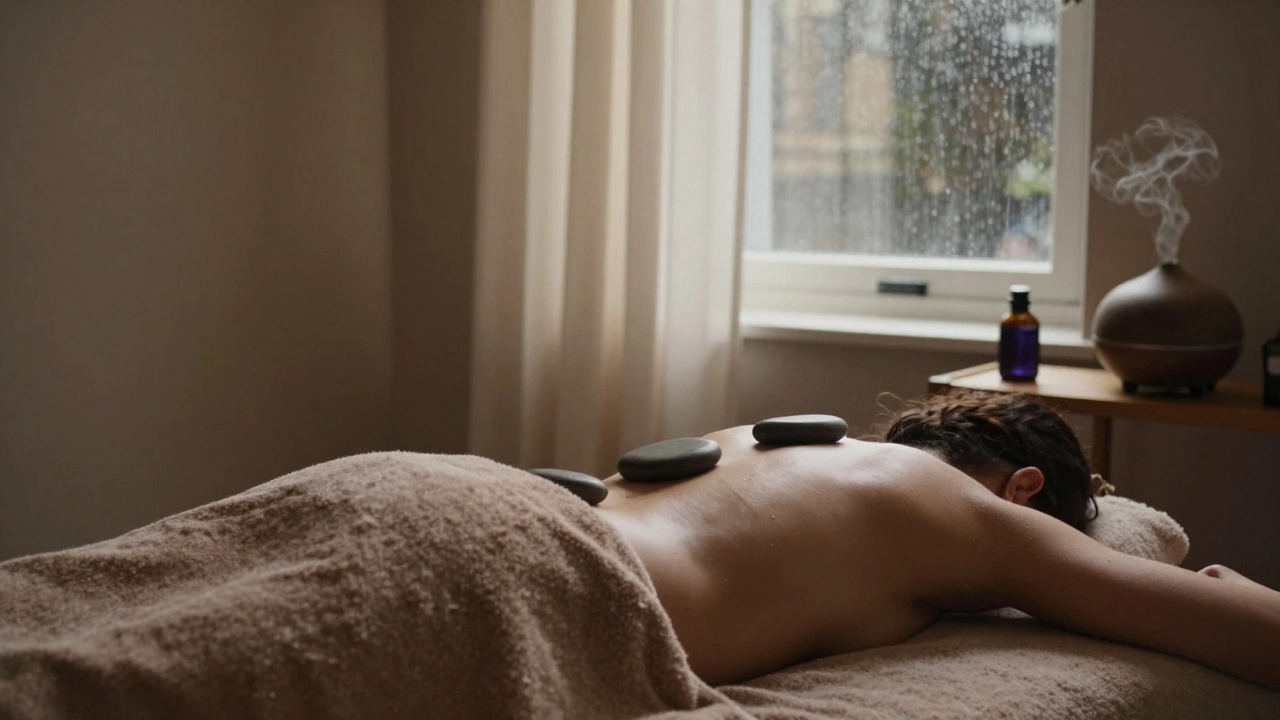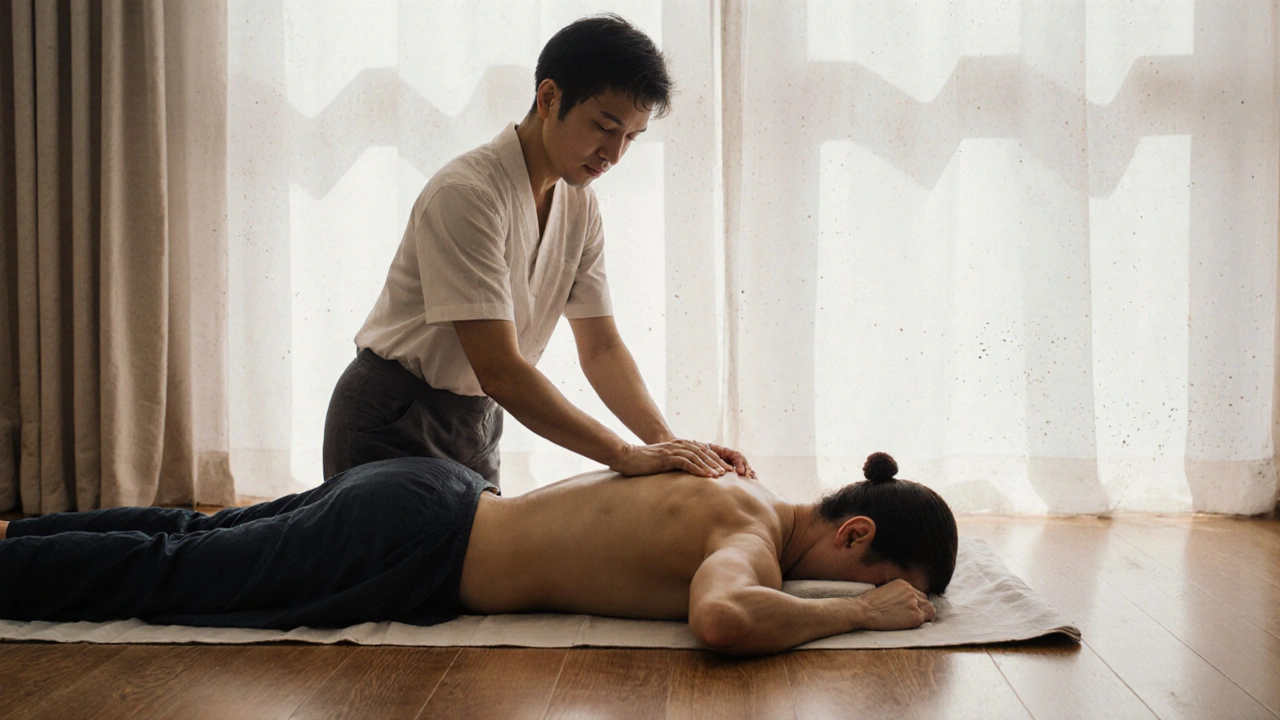Discover how authentic Thai massage in London helps reduce stress, release tension, and restore energy. Learn where to find the best sessions, what to expect, and how it compares to other massage types.

- Created by: Elara Wainwright
- Completed on: 1 Nov 2025
- Categories: Swedish Massage
You’ve heard the buzz: Swedish massage is the gold standard for relaxation. But walking into a spa in London and picking a therapist based on a pretty website? That’s how you end up with someone who’s more focused on the clock than your tension. Finding the right Swedish massage therapist isn’t about who has the fanciest candles or the cheapest deal. It’s about matching your needs with someone who actually knows how to work with your body-not just go through the motions.
What Makes Swedish Massage Different?
Swedish massage isn’t just light pressure. It’s a system. Developed in the 18th century by Per Henrik Ling, it uses five core techniques: effleurage (long, gliding strokes), petrissage (kneading), friction (deep circular movements), tapotement (rhythmic tapping), and vibration (shaking or trembling motions). Together, they’re designed to increase circulation, release muscle tension, and calm the nervous system.
Think of it like a gentle reset button for your body. If you’re sitting at a desk all day, commuting through busy streets, or just feeling mentally drained, Swedish massage doesn’t try to fix deep knots-it helps your whole system unwind. That’s why it’s the go-to for people who want to feel lighter, not bruised.
Why Choosing the Right Therapist Matters
Not all massage therapists are created equal. I’ve seen clients come in after a session that felt like a rushed grocery run: five minutes on the back, two on the legs, and out the door. That’s not Swedish massage. That’s a time-saver.
A good Swedish massage therapist will:
- Start with a quick chat-ask about your stress points, injuries, or if you’re sensitive to pressure
- Adjust their technique based on your feedback, not a script
- Use just enough oil-not so much you’re sliding off the table, not so little that it’s gritty
- Keep the room warm and quiet, with soft lighting and no distractions
- End with a few minutes of stillness, letting you come back to the room slowly
If your therapist talks nonstop, doesn’t ask how the pressure feels, or rushes you off the table after 45 minutes, walk out. You’re paying for care, not a checklist.
What to Expect During Your First Session
When you arrive, you’ll be asked to fill out a simple form-nothing invasive. Just basic info: any recent injuries, pregnancy, skin conditions, or areas you’d like extra attention on.
You’ll be given privacy to undress to your comfort level. Most people keep their underwear on. The therapist will leave the room while you get settled under the sheet. You’ll only be uncovered in the area being worked on.
The massage itself starts with long, slow strokes along your back, arms, and legs. It’s meant to warm up the muscles and signal your nervous system: “It’s safe to relax.” As the session goes on, the therapist might use kneading on your shoulders or circular friction on your lower back. If you feel any sharp pain, say something. A good therapist will adjust immediately.
The whole session usually lasts 60 to 90 minutes. Afterward, you’ll feel warm, loose, and oddly calm-like your body forgot it was stressed.
Where to Find Qualified Therapists in London
London has hundreds of massage providers. But not all are trained in proper Swedish technique. Here’s how to cut through the noise:
- Look for CMT or VTCT certification-these are the gold-standard qualifications in the UK. Ask if they’re registered with the Complementary and Natural Healthcare Council (CNHC).
- Check reviews that mention technique, not just “felt amazing.” Look for phrases like “knew how to release tension without pressure” or “didn’t rush.”
- Avoid spas that only offer 30-minute sessions. Swedish massage needs time to work. Anything under 50 minutes is usually a sales tactic.
- Ask for a therapist who specializes in relaxation, not sports or deep tissue. Some therapists do both, but the skill set is different.
Some trusted spots in London with strong reputations for Swedish massage include The London Massage Company (Soho), Body & Soul Spa (Chelsea), and Harley Street Holistic Therapy. But don’t just pick the most expensive one. Read the reviews, not the price tag.

How Much Should You Pay?
In London, a 60-minute Swedish massage typically costs between £65 and £95. Anything under £50? Be careful. You’re likely getting someone who’s new, unqualified, or cutting corners.
Higher-end spas in Mayfair or Knightsbridge might charge £120+. That’s often for the ambiance-luxury robes, herbal teas, quiet lounges-not better hands. The actual massage quality doesn’t always go up with the price.
Here’s a simple rule: £75 for 60 minutes is the sweet spot. You get a qualified therapist, a clean space, and enough time to actually relax.
Swedish Massage vs. Deep Tissue Massage
| Feature | Swedish Massage | Deep Tissue Massage |
|---|---|---|
| Primary Goal | Relaxation, stress relief, improved circulation | Release chronic muscle tension, break down adhesions |
| Pressure Level | Light to medium | Heavy, focused |
| Best For | Stress, poor sleep, anxiety, general tension | Chronic pain, athletes, stiff necks from desk work |
| After Effects | Feeling calm, light, refreshed | Soreness for 1-2 days, then improved mobility |
| Typical Session Length | 60-90 minutes | 60-75 minutes |
| Frequency Recommended | Every 2-4 weeks | Every 4-8 weeks |
If you’re not sure which one you need, start with Swedish. If after a few sessions you still feel tight or achy, then consider deep tissue. Don’t jump straight into deep pressure-it can make stress worse if your body isn’t ready.
Safety Tips for First-Timers
Swedish massage is safe for most people-but not everyone.
- Don’t book if you have a fever, infection, or recent injury. Your body needs to heal, not be massaged.
- Let them know if you’re pregnant. Some therapists are trained in prenatal Swedish massage, but not all.
- Avoid if you have blood clots, severe osteoporosis, or open wounds. These are red flags.
- Drink water after. The massage moves toxins out of your muscles. Hydrating helps flush them out.
- Don’t eat a heavy meal right before. A light snack is fine, but a big lunch will make you feel sluggish.
If something feels off during the session-dizziness, sharp pain, nausea-speak up. You have the right to stop at any time.

How Often Should You Get One?
There’s no magic number. But here’s what most people in London find works:
- For stress relief: Once every 3-4 weeks. Keeps anxiety low and sleep better.
- For recovery after travel or big events: Once a month. Helps reset after long flights or work deadlines.
- For chronic tension: Every 2 weeks for 2-3 months, then drop to monthly.
Think of it like brushing your teeth. You don’t wait until your gums bleed. You do it regularly to stay in balance.
FAQ: Your Questions About Swedish Massage Therapists Answered
How do I know if a therapist is properly trained?
Ask for their certification. In the UK, look for qualifications like VTCT Level 3 Diploma in Massage or CMT (Certified Massage Therapist). Check if they’re registered with the CNHC. If they can’t provide proof, walk away. Training takes months-not a weekend course.
Can I request a specific gender for my therapist?
Absolutely. Most reputable spas let you specify gender preference when booking. It’s about comfort, not discrimination. If a place refuses, that’s a red flag.
Do I need to talk during the massage?
No. Silence is normal-and encouraged. But if you need to say something-"too much pressure," "that spot hurts," "can you go slower"-speak up. Good therapists welcome feedback. The best sessions happen when you’re completely at ease.
Is Swedish massage good for anxiety?
Yes. Studies show massage therapy reduces cortisol (the stress hormone) by up to 31% and increases serotonin and dopamine. It’s not a replacement for therapy, but for many, it’s a powerful tool to calm the nervous system. Londoners who get regular Swedish massages report better sleep and less mental chatter.
What if I’m not sure I’ll like it?
Book a 30-minute taster session. Some places offer this at a reduced rate. It’s enough to feel the difference without the commitment. If you feel lighter, calmer, and more relaxed afterward-you’ve found your match.
Ready to Unwind?
Swedish massage isn’t a luxury. It’s a reset. In a city that never sleeps, giving yourself an hour to truly relax isn’t selfish-it’s survival. The right therapist doesn’t just move your muscles. They help your mind let go.
Start small. Book one session. Notice how you feel the next day. If you wake up without that tightness in your shoulders, or sleep deeper than you have in months-you’ll know why this matters.
You don’t need to book monthly right away. Just find one person who listens. That’s all it takes to start feeling like yourself again.
Discover the best massage in London for true relaxation. Learn about top therapies, where to go, what to expect, and how to choose a safe, skilled therapist in the city.
Discover authentic Thai massage in London-how it works, where to find real practitioners, what to expect, and how it differs from other massage types. Unwind with a tradition that resets your body and mind.




Timothy Schreiber
November 2, 2025 AT 02:48Swedish massage isn't just about relaxation-it's a reset for your nervous system. If you're sitting at a desk all day, your body is holding tension like a clenched fist. A good therapist knows how to release that without crushing you. Look for VTCT or CMT certs-anything else is a gamble. And skip the 30-minute deals; you're not buying a coffee, you're buying back your body.
Kelley Moody
November 2, 2025 AT 08:23I used to think massage was just a luxury-until I started getting them after my divorce. I didn't realize how much stress I was carrying in my shoulders. The first time I got a real Swedish massage, I cried. Not because it hurt-but because I finally felt safe enough to let go. Don't overthink it. Just find someone who listens. You deserve that peace.
Antony Silson
November 2, 2025 AT 16:03Rick Vaughn
November 2, 2025 AT 20:24Jenna Song
November 4, 2025 AT 09:36Ugh, I tried one of those 'luxury' places in Mayfair. The therapist wore a silk robe and whispered affirmations while I sweated through a 90-minute session that felt like being rubbed with lukewarm butter. Meanwhile, my cousin got a 60-minute massage from a retired nurse in Croydon for £45-and she said she felt like her spine had been reassembled. Spoiler: the price tag has nothing to do with skill. Sometimes the best hands are the ones that don't charge you for the ambiance.
Kerrigan Arnold
November 5, 2025 AT 05:13One thing no one talks about: hydration after. You think you're just relaxing-but your muscles are releasing lactic acid and metabolic waste. Drink water. Like, a lot. And if you're new to this, don't go in with expectations. Just show up. Let your body decide what it needs. A good therapist won't push. They'll wait. And that silence? That's the magic.
Zachary Smith
November 6, 2025 AT 18:56I'm from Texas, moved to London last year. First time I tried a Swedish massage here, I thought, 'This is what peace feels like.' No loud music, no rushed vibes, just quiet hands and warmth. I didn't know how tense I was until I wasn't anymore. If you're skeptical-try it once. Don't overthink it. Just let someone else hold your weight for an hour. You won't regret it.
Heather Blackmon
November 8, 2025 AT 15:15